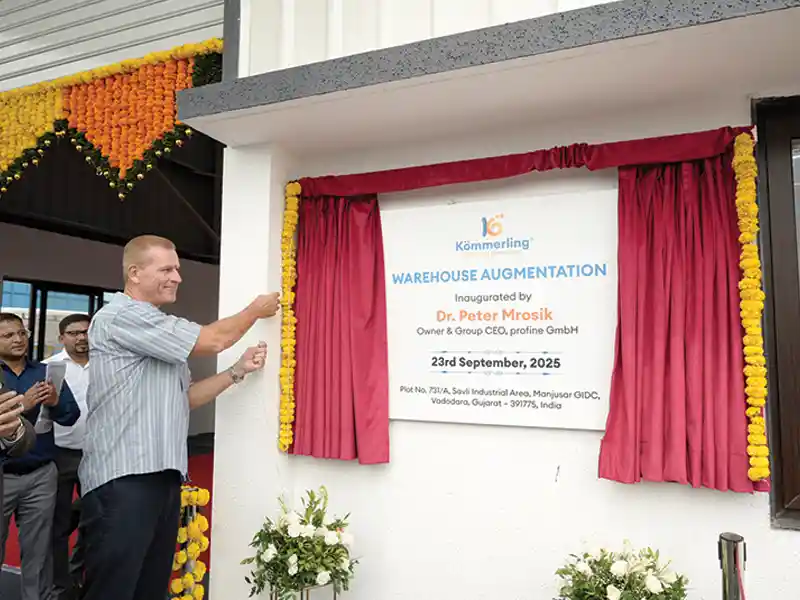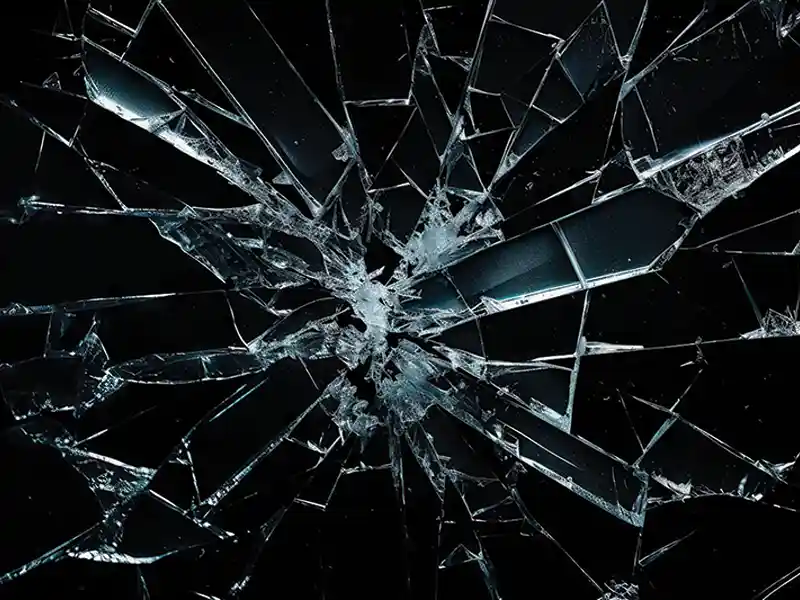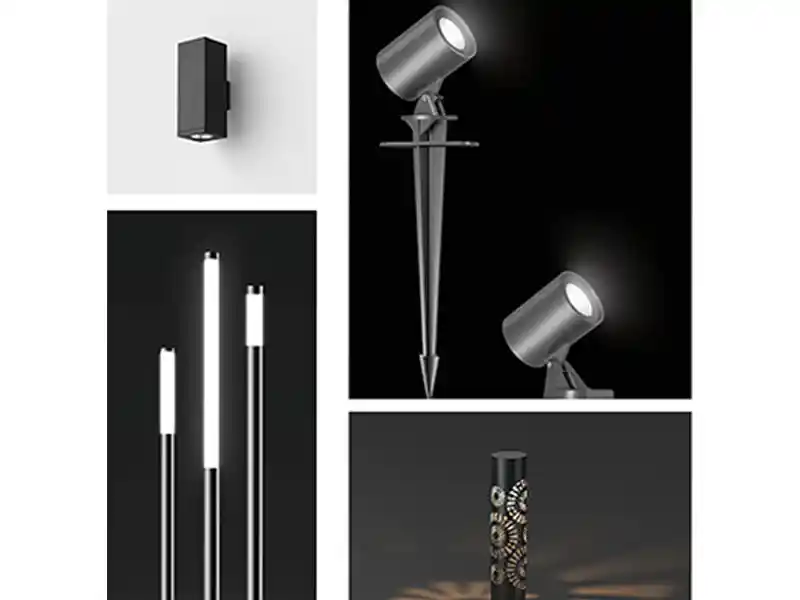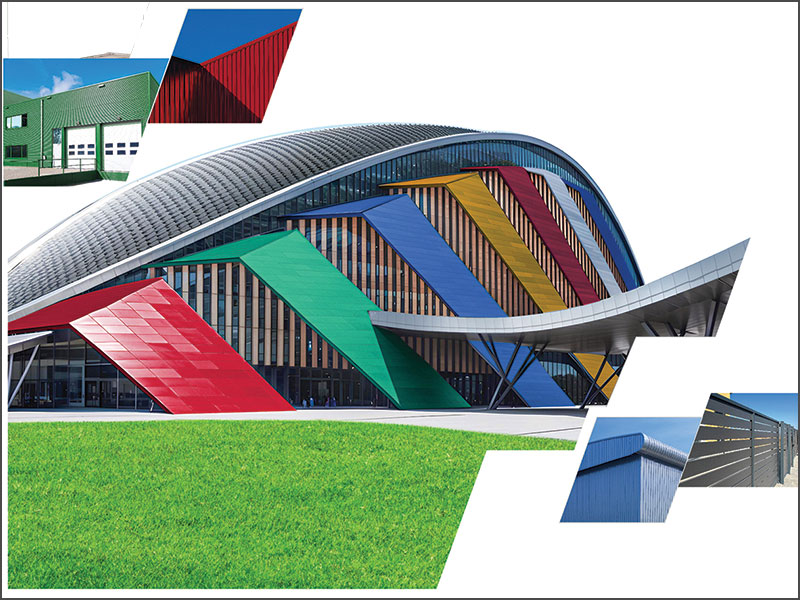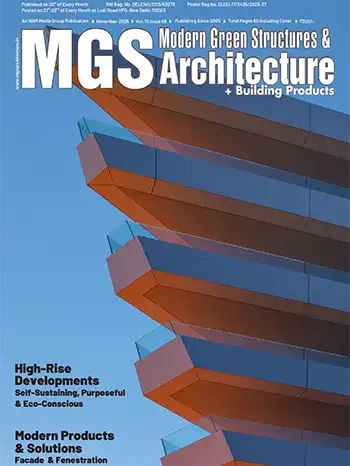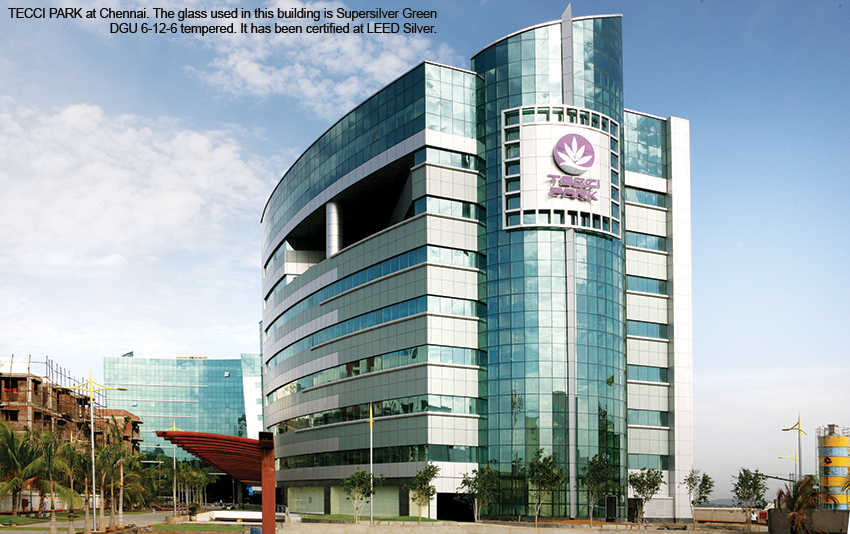
Glass cladding products are redirecting old school thoughts with their fresh aesthetics and utility values. Varsha Trehan explores the trends in the Indian market.
Ratan Tata's new Colaba home is the latest statement in residential architectural elegance. The façade highlights drawing attention are the floor to ceiling glass windows set in an all white structure.
Over 300 sunny days, yet the rising skylines across India stand tall reflected in glass facades. On ground, the increasing applications by architects across the country validates that glass has grown in status as a sophisticated construction element.
India, with its rising world stature has welcomed glass with obviously visible alacrity. Glass as an industry has grown manifold over the last decade. More than just the increase in sales (about 3 times), is the fact that the sale for solar control glasses has picked up quite fast (16 percent annually). There has been an added push with the Green codes and compliance machinery set up in place. As construction volumes have touched never before marks, there's a cry for openness, a breath of fresh air and a need for communication through visibility. Enter glass with its inherent transparency is helping people to see spaces, stay in touch and to communicate.
Competition benefits

Besides construction, glass in general is growing as a preferred material in packaging, automobiles, and other sectors. The glass industry was estimated at Rs. 180 billion in 2010. As technologies advance, the global demand for flat glass alone is reportedly expected to rise 5.5 per cent annually by 2012. In Asia, India and China are marked as strong consumers, mostly in the architectural and automobile segments.
Made to order
Glass is the new fast installation material. With increasing availability, glass is contributing towards meeting people's aspirations for better finishes. It comes through as an efficient, strong and elegant finish and may be moulded to offer freedom and creativity in design. There is scope to link interiors to the natural exteriors, especially greenery. On the inside, open spaces take over from walls, partitions and cubicles. The luxury of a dome and other elements add to the comfort levels, thereby increasing productivity all round.
From an architect's perspective, Prof. Christopher Benninger, Chairman, Christopher Charles Benninger Architects Pvt. Ltd. details "Glass is also seen as an easy material to install and finish the façade over large building masses. A low e glass specified by Saint Gobain is something we have used in many projects such as Suzlon One Earth. In the same project, I invented the concept of ventilating the basements by creating glass chimneys that get hit by harsh sunlight sucking the hot air from the basement. Glass is also seen as material with less manufacturing errors to give that seamless finishing in building industry. After all, we as architects would like our buildings to be well crafted."
As structures address natural disaster damage, glass is the choice for constructing lighter buildings. It also works for serious load reduction on the foundation, versus brick. In good times, modern glass products have proved their sustainability, ease of maintenance while meeting new requirements of thermal insulation.
Niche products, some imported, are also making their mark. At the higher end, products like ceramic printed glass offer solar control with color, visibility management and aid in design. For specific requirements like security, there's the option of bullet proof glass for projects like farmhouses and other isolated properties. Acoustic control is another facility offered by glass cladding, reducing stress from exterior noise. Louvre embedded glass panels will direct the sun rays where you need them. So a glass manufacturer is likely to build up a portfolio of everything from low e glass to fire resistance glass for exteriors and break resistant or high glaze solutions to eco- friendly mirrors for interior applications.
Here comes the sun

Contemporary architecture with its emphasis on openness, freely explores new venues as the functionality of glass progressively enhanced. Glass has transformed and revolutionized today's architecture. From being seen as a material to protect from environment, glass is known as a material for creating a comfortable, safe, aesthetic and sustainable environment. "Glass today can be called an intelligent building material" says Mr. R. Subramanian, Director Sales and Marketing, Saint Gobain.

As India's most highly decorated architects Prof. Christopher Benninger emphatically puts it "There is nothing wrong in the material. No material can be wrong! I believe what needs to be kept in mind, is how one uses the material and more important Glass. Glass in a climate like ours should be used carefully. In most of my projects, I have restricted using glass to the north façade of the building or to open up some dark area to bring light. If one has to use under specific situation on the south facades, a skin over it or louvers to temper the sunlight or the glare would be a better option."
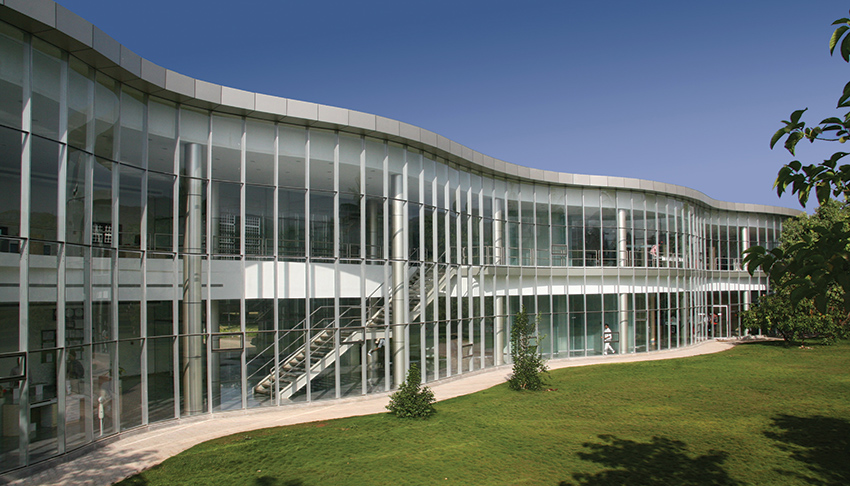

At home with glass

Mr R. Subramanian elaborating on futuristic trends in residential glass use says "Glass for interiors is going to change the dynamics of design in the interior segment. It adds texture, color and identity to each design. The choice of glass for walls, partitions, doors and wardrobes can induce a heightened sense of lavishness, spaciousness and comfort. Our premium interior glazing product is Planilaque Evolution, glass of a lacquered variety, colored and opaque in appearance is ideal for cladding bathroom walls, kitchen counters, pillars and walls, and even lift doors."

Furniture is another feature of interior design that is benefitting from special glass finishes. Lacquered glass products for example, protect users from exposure to Volatile Organic Compounds (VOC) present in paints. Similarly, the new mirror manufacture technologies offer better and safer mirrors. Privacy issues find resolution in specialized products like switchable glass. The gap between expectations, blueprints and realization is steadily closing as glass technology develops and becomes accessible.
Lighting the way
Glass facades optimize the use of natural light to illuminate the interiors, thereby not only making it more comfortable for occupants but also reducing the use of electricity- or fuel-powered light. The versatile nature of the material makes it user-friendly."Creative architecture has maximized the use of natural light for central stairwells in large commercial buildings through the use of glass-covered skylights. Use of glass is especially significant in highrise buildings, which normally resort to substantial use of artificial lighting," is Mr R. Subramanian's view.
The glass is green

Glass usage in construction allows for reduction in artificial lighting and sheds load on air conditioning. The energy efficiency of glass is decided on the basis of its capacity for light transmission, solar radiation transmission and UV light transmission. In Indian climatic conditions, glass products that optimize light transmission and manage deflect solar glare while allowing natural light are obviously preferred.
Products like Saint Gobain's Sun Ban reflects a large proportion of incoming solar radiation, thereby restricting heat penetration into the building while letting in an optimal quantity of natural daylight, thereby reducing the need for both artificial lighting as well as air conditioning. Their SGG BioClean, a self cleaning exterior architectural glass saves on maintenance products and effort. Asahi Glass has a range of products including Sunergy, Stopsol, Supersilver, Stopray, PlanibelG and Energy NT in its top options. "The facade which earlier was conceived in simple float glass and as a negative feature in building has now given way to a facade conceived with high performing glasses and a great opportunity to blend with the nature. However, I would still emphasize the fact that these high performance glasses are not the only choices. A lot depends upon design and simple glasses can also help achieve similar performance as high performance glasses," clarifies Dr Agarwal.
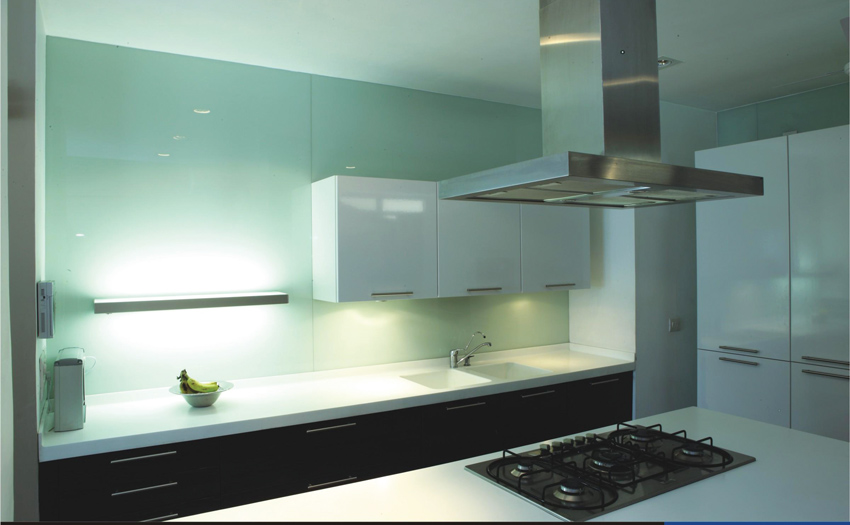
The legal dictat
As regulations like the Energy Conservation Building Code (ECBC) to support the Bureau Efficiency of Energy (BEE) with mandatory applicability is coming for all building complexes coming up with a connected load of 500 KVA or more or a contract demand of 600 KCA or more, developed glass cladding will further develop. The code is also applicable to all buildings with a conditioned floor area of 1,000 m2 (10,000 ft2) or greater. Projects like the Suzlon One Earth, Pune, Wipro building, Gurgaon and the ITC Green Centre, Gurgaon are outstanding landmarks in sustainable architecture.While considering the building envelope design to meet the above criterion, glass plays an important role in the overall aesthetics, energy efficiency and solace offered by the building. The demand is then driven for value added products in basic glass as also for decorative glasses with digital print technology.
Like the material the outlook for the glass industry is clearly visible. There is a great potential for the material in any developing economy like India where there is need for fast track construction. The customer with increasing capacity to demand for improved lifestyle options, is motivating glass companies to improve and develop both technologies and supply. Social responsibility and awareness towards environment are driving design and material to do their bit in each structure that is built in the country. Seems glass cladding holds cheer for all – customer, architect, builder and the industry itself.

